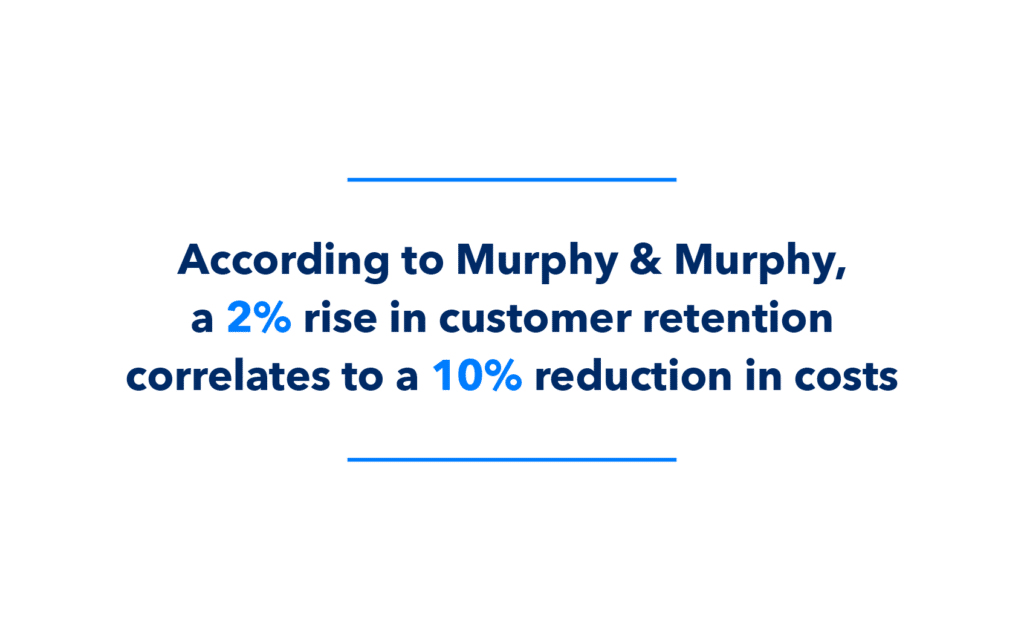Effective CX may be easily recognized, but execution can still be troublesome. It is the measure of all customer interactions and people, systems, technology, and processes behind the scenes that allow and facilitate these experiences.
And since CX is at the nexus of your company, image, customer engagement, purchases, and customer care, designing your brand around your customer takes exceptional teamwork and commitment. Think of CX as an intangible chain connecting all transactions into a single whole, with the end result being a happy customer who will remain loyal to your company.
What’s the ROI? While you may understand precisely how much you have spent on developing your customer experience, it can be hard to quantify the results of that initiative. Yet, the Customer Experience Drives Revenue Growth research by Forrester found that customer experience implementation has achieved 17% average over five years of cumulative revenue growth. During this same timeframe, the CX underperformers achieved just 3% growth. Murphy & Murphy further reports that a 2% rise in customer retention correlates to a 10% reduction in costs.

Beginning with the consumer feels like the logical choice, but companies still approach CX and digital transformation from an expense-cutting or efficiency viewpoint, and this rarely contributes to a desirable customer experience.
Exude customer empathy. Adopting an external approach embodying customer wants is a central element in the development of user experience, but it also extends to CX activities.
Develop a useful and friendly customer experience and really look at things through the customer’s eyes.
This type of work can be approached via varying methods such as:
- Stakeholder interviews
- Focus groups
- Qualitative and quantitative research
- Social insights
Take a comprehensive approach. Efficient customer experience is designed with a purpose that takes into account all the various points of contact and activities that the customer undertakes. Good CX is systematic, deliberate, and coherent.
Be agile. Due to the multi-faceted disposition of customer experience, continuous refinement and innovation are required to deliver the desired outcome. Agile development means a constant harmonization and concentrates on speed, efficiency, measurement, and trust in the executing staff. The aim is to be purposeful for as far as you can see down the road.
Motivate workers to find a solution. Good CX begins with informed staff who can easily get to the root of any customer problem immediately or with limited interactions.
Be guided by a balanced set of parameters. Measurements have to serve the customer from the get-go. All too often, though, it is clear to the consumer that metrics often represent the interests of the company. Metrics should concentrate mainly on comprehensive problem solving and customer satisfaction, then take organizational performance goals into consideration.
Recognize your market’s distinctive support issues. A smart tactic is to analyze and define the primary customer service issues within a given sector—such as lengthy shipping time for components—then work to improve, reduce, or eliminate internal blockages.
Work together with your customer. Co-browsing is when two people share the same browser window. One person uses the customer’s browser while another watches what is being done on a secondary monitor. The co-browsing software allows customer service team members to see what customers see in real-time.
Understand the customer’s experience. Session replay accesses the actual browsing session based on a unique identifier sent to your website as part of the URL request. It then replays as video footage. By recording a login session, you can see exactly how a user interacts with the system and what they’re doing on your website. You’ll be able to easily rewind or fast forward sessions if you need to take an extra look.
Allow for CX to become an integral part of your organizational culture. This is significant, since customer service representatives (CSRs) may only be as effective as management mandates.
The Key Performance Indicators (KPIs).
Customer Effort Score (CES): CES is a customer-centered KPI that shows you how the service you provide is perceived by your customer. The primary concern with the CES score is how easy or difficult it is for a customer to resolve their issue. Customers don’t want to put in a lot of work to get a question answered or a dispute addressed. In simple terms, a high CES score shows that customers believe it’s easy to receive the service they need, when they need it.
Net Promoter Score (NPS): Initially developed by Bain & Company in 2003, NPS calculates customer loyalty.
Customer Satisfaction Score (CSAT): CSAT is another common customer-centric KPI. In using CSAT, the consumer is asked to assess the product or service by assigning it a number between 1 and 10. The median score is shown as an overall number.
Voice of the Customer (VoC): This metric aggregates the customer’s feedback and opinions on your goods or services. It also reflects consumer interests, expectations, knowledge, and product development.
Satisfied customers are at the core of every successful company, so it’s important to provide the service they expect. Make customer feedback a priority and analyze the stories behind your KPIs. The less work a customer is expected to do to get their needs met, the more loyal they’ll be.


